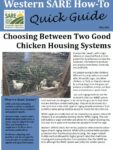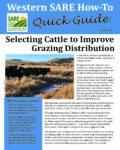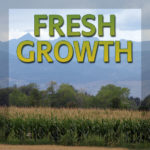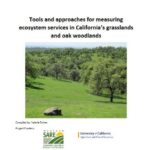Showing 1-4 of 4 results

WSARE Quick Guide: Choosing Between Two Good Chicken Housing Systems
Quick guide to choosing between chicken caging systems.

WSARE Quick Guide: Selecting Cattle to Improve Grazing Distribution
Quick guide summarizing what you can do to select cattle to improve grazing distribution.

Fresh Growth Podcast
Fresh Growth: Approaches to a More Sustainable Future from Western Ag Practitioners introduces you to farmers and ranchers from around the western United States who are finding innovative sustainable practices that enrich the natural resources we all care about. These successful multi-generational operations experiment with new ideas and are making it pay. Listen in as […]

Tools and Approaches for Measuring Ecosystem Services in California's Grasslands and Oak Woodlands
Ecosystem services are the benefits humans receive from our natural ecosystems and working landscapes. These services include: forage production, erosion control, soil fertility, water storage, flood control, carbon storage, fire control, pollination, water purification, air purification, and others. While there is increasing interest in managing landscapes for multiple ecosystem services, very few management and restoration projects monitor their impacts, and thus we have little information on the effectiveness of management practices on ecosystem services. This project developed a monitoring handbook to increase monitoring efforts across management projects and to provide more consistent types of measurements across studies, which will make monitoring measurements more directly comparable.